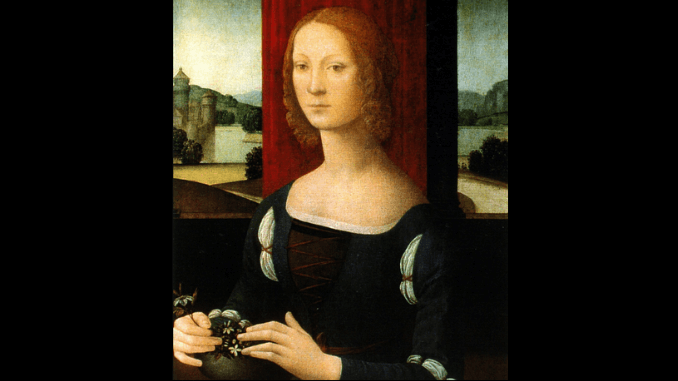
This afternoon I was listening to Paul Michael’s narration of the twelfth chapter of Robert Greene’s book, The Laws of Human Nature, Reconnect to the Masculine or Feminine Within You. The chapter argues that there is much to be gained in reconnecting with the qualities of the opposite sex that we carry within us. In doing so, Greene argues, we will become more fluid in our thinking and fascinate others by our newfound “authenticity”.
He then tells the story of Catarina Sforza, as an example of a woman tapping into her masculine side. I immediately pricked up my ears as I am familiar with her on three counts: First of all because I lived in Imola as an English teacher back in 1988-89, secondly because I lived in Rome from 1989 to 1990, in a pensione on Via Muzio Clementi, just a few minutes’ walk from Castel San Angelo; thirdly, Machiavelli cites her story in The Discourses when dealing with conspiracies, in The Prince when discussing fortresses, and also in The Florentine Histories.
Greene, as you would expect, draws on the story that Machiavelli first tells in The Discourses, of how Catarina faced down conspirators who were holding her children hostage while allowing her to enter her castle. In Machiavelli’s words:
As soon as she was inside, she reproved them from the walls for the death of her husband and threatened them with every kind of revenge. And to show that she did not care for her children, she showed them her genital parts, saying that she still had the mode for making more of them.
Machiavelli, Discourses on Livy, III, 6, 18
Here is Greene’s version of events:
The enraged assassins had had enough. The next day they returned to the castle with her six children and called Caterina to the ramparts. With daggers and spears pointed at them in the most menacing fashion, and with the children wailing and begging for mercy, they ordered Caterina to surrender the fortress or they would kill them all. Surely they had already proven they were more than willing to shed blood. She might be fearless and the daughter of a Sforza, but no mother could possibly watch her children die before her eyes. Catarina wasted no time. She shouted down: “Do it then, you fools! I am already pregnant with another child by Count Riario and I have the means to make more!” at which she lifted her skirts, as if to emphasize her meaning.
Robert Greene, The Laws of Human Nature, ch. 12
There is a paper on JSTOR that appeared in Renaissance Quarterly back in 2000, that the skirt-lifting episode was an invention of Machiavelli’s.
Another detail that interested me is that Greene suggested that while Catarina Sforza was in Rome Botticelli used her “as a model for some of his greatest paintings.”
Greene is rather coy as to which paintings they might be. A quick Google search pulls up a site that claims she is the model for a portrait of a woman who is identified as Simonetta Vespucci by Frank Zollner in his magnificent volume on Botticelli.
Another article claims that she was the model for one of the Three Graces in Botticelli’s Primavera, and is the model for “Athena” in “Pallas and the Centaur.” Zollner makes no mention of Catarina in his essays on Primavera. As for the painting “Pallas and the Centaur,” Zollner names it Camilla and the Centaur and again makes no mention of Catarina Sforza.
I also read somewhere that Catarina was the subject for one of the characters in one of Botticelli’s Sistine Chapel murals. In checking all this out I discovered what looks like a “must read” book about Catarina Sforza, The Tigress of Forli. The author, Elizabeth Lev, mentions a couple of possible portraits in this article and Q and A session for the Tuscan Traveler website.
Elsewhere, Elizabeth Lev also mentions that Catarina Sforza’s armour is preserved in a museum in Bologna. It is quite possible, then, that I have seen the armour but if so, I have no recollection. Time to pop back to Italy, methinks.
DH
